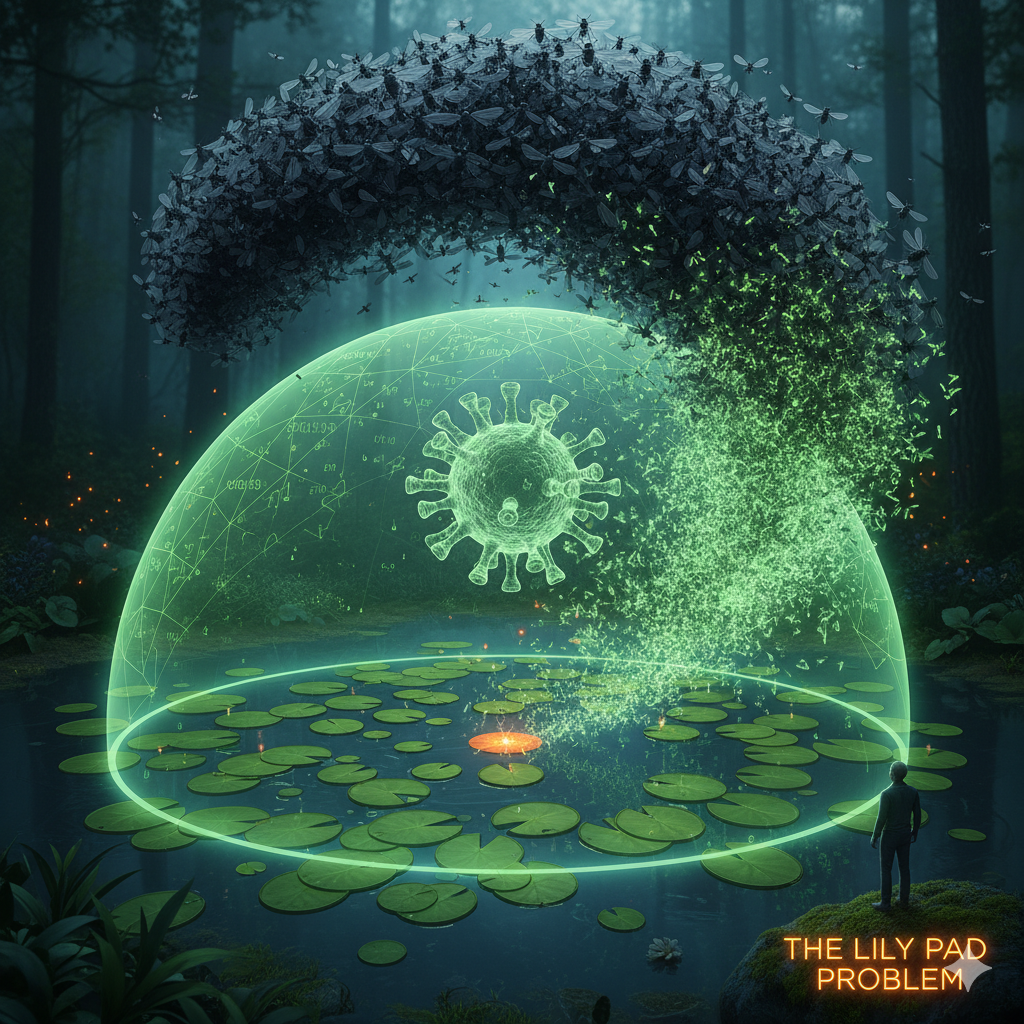The Lily Pad Problem: Why Exponential Growth is Nature's Sneakiest Trick

TL;DR: Exponential growth is a deceptive mathematical pattern where small, gradual increases suddenly explode into overwhelming numbers, which explains everything from viruses to the brief, massive swarms of mayflies.
Let’s Dig In
Nature loves efficiency, and one of its most powerful designs is exponential growth. You see it everywhere, from the fractal branches in your lungs to the structure of a tree—it’s a pattern of building on what’s already there. The key concept is that the amount being added isn’t a fixed number; it’s a number proportional to the current size.
Think of it like this: Imagine you have a pond with a single lily pad. This lily pad doubles its size every day, and it takes 30 days to cover the entire pond. The gut instinct is that the pond would be half-full on Day 15, right? Wrong. Because the pad doubles every day, the pond is only half-full on Day 29. That’s how exponential growth fools your brain—it starts slow, almost invisibly, then explodes in the final moments.
This is the power behind life, and sometimes, its greatest danger.
The Pandemic Parallel
When a virus like COVID-19 begins to spread, it follows this exact pattern. In the first few days or weeks, it’s just a few cases. It feels manageable, like a few drops of water in a bucket. But if each sick person passes it to just two other people, that doubling effect is a ticking clock.
It’s the difference between simple, or linear, growth (adding one person every day) and exponential growth (doubling the number of sick people every day). Linear growth is predictable; exponential growth is terrifying because the danger is hidden until it’s too late. The system—our hospitals and social services—is entirely overwhelmed not by a sudden, massive wave, but by the relentless, geometric doubling that shifts from small to catastrophic in a flash. The crisis is not the failure of a person to get better, but the systemic failure to contain the initial, seemingly harmless, tiny growth.
The Mayfly Swarm
Mayflies are a perfect, bizarre example from the natural world. These insects spend nearly all of their life—sometimes up to a couple of years—as nymphs, or larvae, underwater. They’re constantly eating and shedding their skin. Then, in a massive, synchronized “hatch,” they emerge all at once. The adult mayfly exists for only a day or two, sometimes just a few minutes, solely to reproduce.
A single female may lay thousands of eggs. This massive, sudden swarm of brief lives is necessary because the adult life stage is so short and so dangerous. It’s a calculated, mathematical gamble: by throwing overwhelming, exponential numbers into the air at the exact same moment, they ensure enough survive predators (like fish and birds) to complete the cycle. The mayfly’s brief, explosive appearance isn’t a miracle; it’s a testament to the brutal, efficient math of population growth. Nature is a billion-year-old design experiment, and these patterns are the peak of its destructive, beautiful genius.
Go Deeper: Never take at face value anything that claims to inform or educate. These “receipts” come from reliable sources for further, accurate reading.
Link 1: Simple Explanation of Exponential Growth (Wikipedia) Link 2: The Lily Pad Story as an Exponential Metaphor (Manage By Walking Around) Link 3: Mayfly Life Cycle and Reproductive Strategy (Wikipedia) Link 4: Exponential Disease Transmission and Flattening the Curve (Population Education) Link 5: Compound Interest as a Financial Example of Exponential Growth (Investopedia)